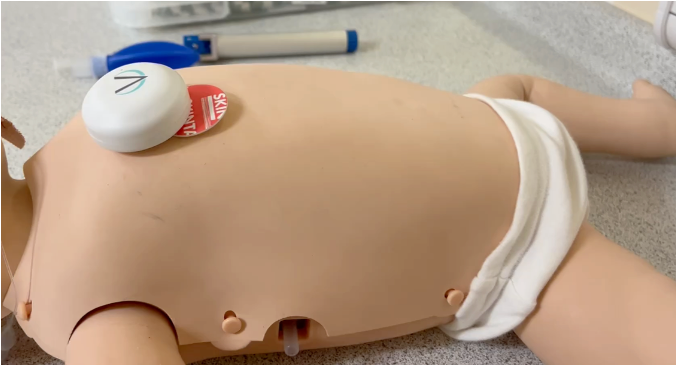CCIO profile: Sarah Amani
- 3 December 2013

Sarah Amani has an unusual background for a chief clinical information officer. Not only has she taken up her post relatively early in her career, she has come to it via developing an app for patients, rather than by getting involved in a big EPR implementation.
Seeing IT as an enabler
Amani completed her mental health nursing training at the University of Surrey in 2004, and began working at an acute inpatient mental health unit for adults. Her role there made her interested in what happened to people who were experiencing mental illness in the community.
This took her to her next job as a community psychiatric nurse, after which she joined the Early Intervention in Psychosis service run by Surrey and Borders Partnership NHS Foundation Trust.
There, her journey towards becoming a CCIO began, because she soon realised that young service users were not happy with the way they had to access services.
“I’ve always had a bit of interest in how IT can act as an enabler,” Amani says. “I like connecting with various people and seeing things from different perspectives. I’ve always found technology to be a big part of that, as you can’t always meet people face to face.”
Building the ‘My Journey’ app
Amani’s next step on the career ladder was to become the service’s team leader, which put her in a position to do something about the problems young users were facing.
“Soon after [I took on the] team manager’s post, the team completed a patient and carer satisfaction survey which yielded mostly positive feedback,” she says.
“However, some of carers commented that for an open referral service, they had found information about the service pretty hard to find. As a result, some of the young people and carers had found accessing our service difficult.”
Amani sat down and talked to some young users and their families. This led to the creation of an easy to access website and the development of an early intervention app for young people with mental illness.
The ‘My Journey’ app lets users monitor their mood and get advice on any symptoms that they have. The app has been well received, and Amani has spoken about its development at several conferences. She is now looking to develop it further.
“I would like to work on making information from various apps more useful, connect the numerous data from the various health apps into electronic patient records,” she says.
CCIO: a new idea for everybody
However, she became the trust’s CCIO last September, and has found that the role can prove challenging at times; not least because it is not only brand new to her, but to the mental health trust.
Although Surrey and Borders Partnership has a clinical advisory group, which is often consulted on IT projects, Amani is the only full time, dedicated clinician for IT.
“It’s great to have the clinical advisory group behind me. As the first CCIO in this organisation, there’s a lot to prove. So I have to focus on what the job has to achieve and to utilise a role that the trust has never had before,” she says.
“It’s been good, but very busy so far. My role is not as clinical as it was before – it’s more clinical engagement now; although I still get to meet with service users.”
Flying into RiO
One of the main projects she is involved with is looking for a replacement patient administration system, as the contract for the trust’s RiO PAS, which it received as part of the National Programme for IT, expires in 2015.
“At the moment, our focus is our electronic health record post 2015 when the national contract ends,” she says. “My role is to look at the process and ensuring that the clinical engagement is part of it.”
Amani is a very big fan of open source electronic patient record systems. NHS England has upped attention on open source by floating the idea of anglicising the US VistA system and looking for projects to support through the Safer Hospitals, Safer Wards: Technology Fund.
Amani hopes that one of these will deliver. “Open source is a very sustainable way of maintaining systems and can solve many of the problems caused by disparity between systems,” she says.
“My one wish would be for a system of open source electronic health records and patient records – designed with a lot of attention to user experience – that are secure, locally configurable and interoperable.”
Whatever the code base, though, for Amani it all comes down to user experience. Whether it is going to be used by a clinician or a patient, she says, it is important to remember who the technology is for.
“I am also looking at telehealth and virtual therapies and making sure we are designing the solution around the users, both service users and clinical users,” she says.
Love innovation, embrace change
Amani reports to the trust’s director of innovation, something she thinks is unique to her role. She says this requires her to be innovative and to constantly think on her feet. She has already learnt a few valuable lessons.
“It’s not just about clinical informatics but about how I can enable the opportunity across the divisions to do things differently, which is a blessing and a curse,” she says.
“Most people celebrate innovation, but most people also don’t like change. You have to win people’s hearts and take people with you. You can’t leave people behind or alienate them.”




